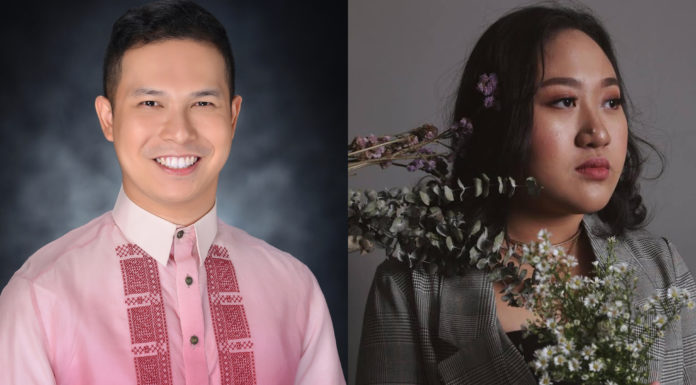 HEARING impairment affects nearly one out of 10 Filipinos and is considered the second most prevalent disability in the Philippines, next to movement disability.
HEARING impairment affects nearly one out of 10 Filipinos and is considered the second most prevalent disability in the Philippines, next to movement disability.
And with only 30 practicing audiologists in the country to date, reducing the cases of hearing-related problems is an uphill climb.
With 8.8% of the population suffering from hearing deficiencies, the need to train more audiologists becomes more pressing than ever, said Hubert Ramos, lecturer at the Department of Otorhinolaryngiology of the Faculty of Medicine and Surgery.
UST is one of only two universities, the other being the University of the Philippines (UP), offering clinical audiology as a post-graduate course.
Audiology is the study of hearing, hearing disorders, and remedies, which include hearing aids and vibro-tactile and cochlear implant devices. Audiologists are also tasked to counsel and train health workers.
Ramos said that the difference between an audiologist and an ear doctor “can be likened to that of an optometrist, who measures a person’s vision and prescribes eye glasses, and an ophthalmologist, who has a medical degree and is specialized in eye surgery.”
To establish the prevalence of hearing problems among Filipinos, UST’s 10-year-old clinical audiology program was commissioned by the Department of Health in 2005 to conduct the first nationwide survey on hearing disorders.
According to the survey, 28% of Filipinos have hearing problems, characterized by reduced ability to hear, while 8.8% suffer from hearing disabilities, which prevent patients from communicating properly with others.
UST experts also conducted a strategic planning workshop on a national ear and hearing healthcare program, based on the survey, in partnership with the Health department.
The program was implemented by local governments to address hearing problems, Ramos said.
Lending ears
Only UST, UP, and the University of Hong Kong offer a post-graduate program in clinical audiology in Asia.
In the Asia-Pacific, UST is acknowledged as one of the best universities in audiology, next to the University of Hong Kong, Ramos added.
Clinical audiology is one of the two post-graduate programs that have been devolved from the Graduate School, the other one being the pain management program also under the Faculty of Medicine and Surgery.
The program traces its roots from audiology courses given by the Department of Otorhinolaryngiology in 1991. With the help of audiologists from abroad such as Prof. Philip Newall of Macquarie University in Australia, Prof. Dennis Au of the University of Hong Kong, and Douglas Clutton of Canada, UST’s clinical audiology program was established in 1999, admitting students with a bachelor of science degree.
Since then, UST has been offering the clinical audiology course only every two years because the program is still “young,” Ramos said.
“We want to maintain the quality of graduates and to maximize the facilities since the program is intensive. Because of this, only a maximum of 30 students are admitted,” he said.
An advantage of being under the Faculty of Medicine and Surgery is the convenience of sharing common facilities and faculty members, Ramos said.
Because the program is clinical in nature, it is conducted in a hospital setting. Thus, students are allowed to practice in UST Hospital’s out-patient department to hone their skills, Ramos said.
Students from the program operate the Center for Audiological Sciences which boasts of having the most comprehensive audiologic equipment for pediatric and adult cases.
It is the only center referred by the Philippine Charity Sweepstakes Office for free hearing evaluation. The center has already catered to 5,000 charity cases, Ramos said.
The University has ties with Macquarie University of Australia and the University of Hong Kong, which send professors to UST to teach once a year. Under the tie-up, UST students can train at Macquarie University and the University of Hong Kong at their own expense. In turn, students from the two foreign institutions can also train in UST.
“Because of the tie-up, UST is accredited in Australia, New Zealand, and Singapore,” Ramos said.
Unlike other health-related programs that require licensure examinations before practicing the profession, graduates UST’s clinical audiology program do not have to take government exams.
Because of the few number of graduates, there is no regulating body for audiologists in the Philippines. However, an agreement exists between UP and UST wherein UP graduates are given comprehensive examinations by UST and vice versa.
The examination serves as the regulatory measure between the two universities.
Supply and demand
Due to the high demand for professionals, some clinical audiologists are already being hired by companies while still studying.
“When a student reaches the second semester of first year, they can be hired by hearing centers temporarily due to the lack of audiologists. In fact, our graduating students are all signed up for jobs once they graduate,” he said.
The demand for audiologists who will perform tests and identification is expected to increase further should Sen. Loren Legarda’s bill on mandatory newborn hearing screening become law, Ramos added. Still, many students take up clinical audiology to take advantage of opportunities abroad.
“Out of the 81 Thomasian graduates, roughly 15 or 16 are practicing in the Philippines. Those who practice audiology in the country can put up their own clinics. They can work in the industrial setting by handling the hearing conservation program of a company where they will be tasked to ensure that workers wear the necessary ear protection for their jobs.
Other audiologists may also pursue educational audiology which focuses on monitoring children with hearing impairments and who wear hearing aids in school,” Ramos said.
In Metro Manila, the only hospitals that have clinical audiologists are St. Luke’s Medical Center, the Philippine General Hospital, Medical City, and UST Hospital, he said.
“This is the kind of job that will guarantee employment. While other health professions are already saturated with a high number of graduates, the field of clinical audiology demands a lot of practitioners.” Alena Pias P. Bantolo
















Ma’am/Sir
Good evening! I am Anabelle Ramos, 4th year BS Psychology student from FEU. I would like to ask if I need to take additional units in order to be eligible for the medical course in Audiology at UST, as well as other requirements. I would also like to inquire about what NMAT score would be needed to qualify for admission.
Thank you very much.
Anabelle O. Ramos
FEU – Student
Would like to know if there is age requirement for the Masterial Degree in Clinical Audiology. I am 67 years old and have a granddaughter who is profound deaf – the latter being the reason why I am interested to pursue this degree. I have an A.B. degree in Anthropology from the Univ. of the Phil. and a masteral certificate in Education in Functional Literacy (Applied Linguistics) from the Baguio Vacation Normal School. Would like to know also if Educational Audiology is being offered as a separate degree program from Clinical Audiology.
Hey there, You have performed an incredible job. I’ll definitely
digg it and in my view recommend to my friends. I am confident they
will be benefited from this web site.